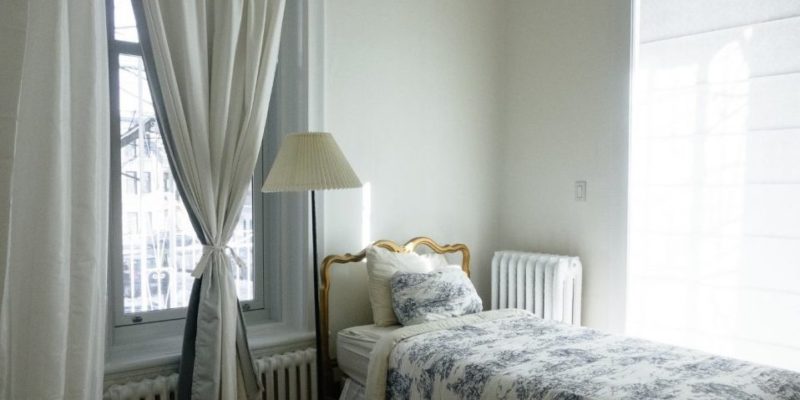If you’re looking to save money on your energy bills, then you should view your windows as a priority. A significant amount of heat is lost through a home’s windows, but there’s an easy way to reduce that loss – curtains.
Why do curtains help with heat retention?
Curtains help with heat retention by limiting the flow of air between the warm and cold areas of a room. Even double-glazed windows will afford heat with a chance to escape, but a set of heavy curtains will form a barrier that’ll limit the flow of air from the main room to the window.
While some air particles will be able to move through the gaps in a curtain, many of them will encounter resistance – just like wind blowing against a ship’s sail.
Even if the air immediately beside the window cools considerably, if it doesn’t have the opportunity to mix with the warm air in the rest of the room, you won’t notice – and neither will your energy bills.
What about letting sunlight in?
Of course, if we’re concerned about energy efficiency, then we shouldn’t just be concerned with heat escaping the room; we should also worry about the sunlight that might find its way in.
Natural heat from sunlight streaming into your home can limit the strain on your energy bills. This is of particular importance if the window in question is south-facing, as there will be more direct sunlight to allow into the house. As a rule, you should open up your curtains as soon as the light strikes them to make the most of the warming sun.
What sort of curtains are most effective for heat retention?
According to researchers from the University of Salford, drawing your curtains at dusk can reduce heat loss by around 15-17%. With blinds, the figure is a little lower at 13-14%, but the difference is enough to make closing them worth it. These findings have been echoed in laboratories across the world, with the US department of energy putting the figure at around 10%. This can go up to 25% if you’d like to seal your curtains to your wall on either side with electrical tape. While this might seem like an extreme measure, it’s one that might be worth considering in areas where the rear of the curtains is unlikely to be visible.
How much heat can curtains help retain?
By extension, heavier curtains are better at preventing heat exchange between the cold air around the window and the warm air in the rest of the room. The thicker the curtains, generally speaking, the more effective they are as an insulator. The best insulating curtains come with a lining attached to the rear, which is designed to increase insulation as well as limit airflow and noise transfer. You might even consider a second pair of curtains, designed for exactly this purpose, which hang just behind the first pair.
If you have old, draughty windows, upgrading to new insulating windows can significantly improve the warmth and energy efficiency of your home. Take a look at our highly efficient JELD WEN Stormsure casement windows and Stormsure Energy+ windows for optimal performance.


